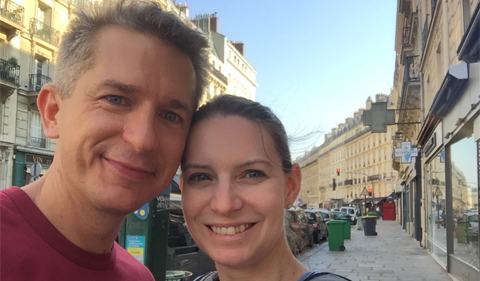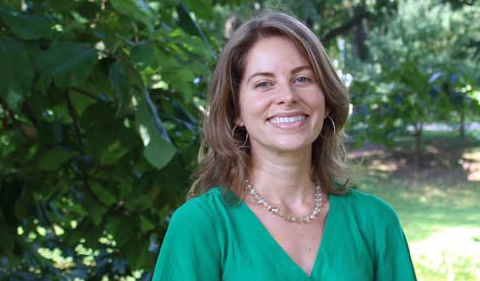
Daniel Hembree and Alycia Stigall
Ohio University paleontologists Drs. Alycia Stigall and Daniel Hembree, both professors of Geological Sciences, presented at the 5th International Paleontological Congress in Paris (IPC5), France in July.
The IPC5 is the largest gathering of professional paleontologists globally, and this meeting included more than 1,000 participants from around the world. All aspects of paleontology were discussed during the IPC5 from microbes to dinosaurs.
“In the early 1800s, Paris was one of the centers from which modern paleontology began,” Stigall noted. “It is was fantastic to view specimens examined by Cuvier and then to be able to connect with both that history and the cutting-edge science of today.”
Hembree’s presentation, titled “Effects of the Late Paleozoic climate transition on soil ecosystems of the Appalachian Basin: evidence from ichnofossils,” focused on the advances in scientific understanding of ancient soil ecosystems gained by the work conducted by himself and his students on the local strata in southeastern Ohio.
“The response of soil ecosystems to changes in climate is a critical issue in the modern, but one which has not been widely explored in the geologic record,” Hembree said. “Changes in the types of roots and animal burrows through this time period (about 305-290 million years ago) show a clear response in the composition of soil communities to variations in climate. This work is needed to better understand the long-term impact of climate change on soil.”
Stigall was the keynote speaker in a session focused on understanding the explosive development of diversity and environmental change during the early Paleozoic Era. Her presentation “Coordinated biotic and geochemical change during the Great Ordovician Biodiversification Event: the view from Laurentia” synthesized data from the fossil record, sedimentary rocks, and ocean geochemistry to provide comprehensive analysis of the timing and environmental drivers behind the major global event that led to the development of modern marine ecosystems.
Later in the conference, Stigall also spoke about “How is biodiversity produced? Biotic immigration events, speciation, and the accumulation of biodiversity in the fossil record,” a presentation based on analyses conducted with three former Stigall lab members, David Wright M.S. ’12, Jennifer Bauer M.S. ’14, Adriane Lam M.S. ’15, published earlier in the journal Global and Planetary Change. This research emphasizes the key role that biogeography plays in the development and maintenance of diversity.
“This is a key issue for modern ecosystems,” Stigall noted, “and one in which paleontological data can have a large and powerful voice as the archive of past earth-life events.”



















Comments